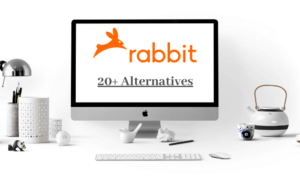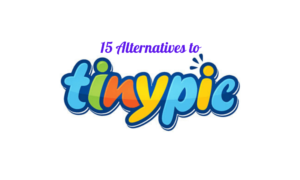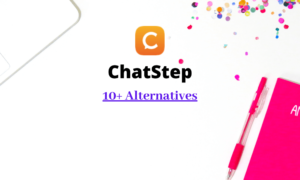UI and UX are common topics for discussion in many articles that involve education-oriented apps. In this review, our goal is to review the key reasons for the importance of these concepts. Before we proceed to the full-scale analysis of UI/UX design in the education industry, it’s essential to review the definitions of those terms. UI stands for the user interface.
It’s about the graphical elements and layout of a product or service that users interact with. UX stands for user experience. The term describes the overall experience that a user has when interacting with a product or service.
Why are those terms so important for the long-term success of an education app? In education software design, UI/UX is significant because it can help create a more engaging and effective learning experience. If you design a piece of software that is easy to use and understand, you allow students to focus on learning rather than on struggling with the interface.
Are you interested in software development opportunities within the education sector? In that case, we’re ready to offer you some interesting companies. Try out the development services of Keenethics, which you can find via the following link: https://keenethics.com/services-education-software-development
The Role of UI/UX Design in the Education Industry:
1. User-Centered Design
Who is the key person in any development process? An obvious answer is to say that the developers are central as they create apps. The reality is different: users are the protagonists of any software development.
Why? Because they’re the people who’ll spend more time than anyone else with your app. They’re also the only group that can bring you lasting income: our economy is consumer-centric. Few individuals would be willing to engage with your project as much as those individuals.
In this light, the design of your app should become as user-centered as possible. What are the key benefits of doing this?
- You boost user loyalty: A user-centered design shows who’s the most important person for your company. Consumers like being treated well, and the user-centered approach achieves this. When you respect the users, they’ll respect you in turn. For this reason, it’s crucial to review their requests and adjust an app toward the needs of the end users rather than the imagination of the software developers.
- You get relevant feedback: When you go for a user-centered approach in design, it’s impossible to ignore the feedback of the users. Indeed, it can sometimes be harsh. What to do in this case? We recommend treating any negative comments not as an insult but as advice for improving an app. People who learn something via education-centric apps spend many hours on them. Trust us, they’re the most likely to know the strong and weak sides of your project.
See Also: Updating Your Existing Company Logo? 8 Key Factors To Consider
2. Accessibility and Inclusivity
Our world is full of identities and diverging states in which a human exist. Being healthy or, for example, European are only parts of the human spectrum. In this light, your app should become accessible and inclusive. Firstly, you should consider that millions of people have some disabilities: they may have vision, movement, or hearing impairments.
By considering them, you get an opportunity to target a wider audience and gain more money and a positive reputation. Secondly, there are many ethnic or racial identities, for example. Their internal mindset regarding learning may be different from the approach common in Europe or North America.
You should consider those individual learning styles and offer the users an opportunity to configure the learning process according to their unique needs.
3. Ease of Use
Many people who try out learning apps don’t have much time for education. They, for example, may be working full-time or be in some form of long-term training that takes a lot of their time. In this situation, any waste of time encountered by the users is unacceptable. If you have a 12-hour workday, even 2 minutes can be decisive.
This means you should create interfaces offering minimal impediments for the clients. They shouldn’t stand in the way of the users. Ease of use is among the key aspects to consider for any education project because it’s, once again, about respect toward the clients. When you save their time through good UI/UX, they get more time to learn. 2 minutes of saved time a day amounts to 14 minutes per week and 60 minutes a month.
So, what are the key ways to boost ease of use within modern education software? Here are some of the key tips you should consider:
- Use clear and concise language: the language used in the software should be clear and concise so that students can easily understand what they’re supposed to do.
- Use simple and intuitive navigation: easy navigation (good categories and high-quality search tools) is central because it allows the students to find the services they need fast. The fewer barriers you offer, the higher the chance more people would be willing to use your service.
- Provide clear feedback: the software should provide clear feedback to students. Only this approach ensures that they know if they’re doing something correctly or incorrectly. Nothing is more dangerous for learning than the lack of clarity regarding one’s progress. Feedback is the key framework for learning in the modern world.
- Use appropriate visuals: Visuals can be used to improve the ease of use by making it more engaging and easier to understand. They enhance all three preceding points regarding good design. Great visuals upgrade language clarity (an image can explain certain things better than words do) or, for example, ease navigation through memorable icons.
4. Feedback and Iteration
The final element to consider for the high-quality UI/UX in the software design sphere is the presence of feedback and iteration. Why is it so important? A good education app is always user-centered. One of the key things users will produce is feedback regarding your app.
By collecting the relevant suggestions, you can eventually outline the key things significant for your app. Upon doing this, one may go for the incorporation of feedback. Modern developers offer iterative changes upon analyzing the claims of the users.
How to integrate this feedback? In our opinion, nothing unique is crucial here. Simply listen to people, turn their suggestions into realistic changes, and implement them.
See Also: Kahoot Alternatives Free
Conclusion
To summarize, UI/UX is a defining element for app success. A good user-centered design shows massive respect for the user. This respect, in turn, will turn into respect for your firm from the clients. Many people prefer solutions with better UI/UX but fewer functions to options with low-quality design but advanced features. macOS is more popular among professionals than Windows due to offering a more comfortable experience for the users, for example.
Memrise is more popular than Anki because it offers a more comfortable approach to card-oriented language learning. If you’re interested in high-quality education software development, contact professional organizations.
In this respect, Keenethics can be a perfect choice because this company has more than eight years of experience developing products in the finance, education, and healthcare sectors. Contact them to get advanced custom software development help with your education project.





















